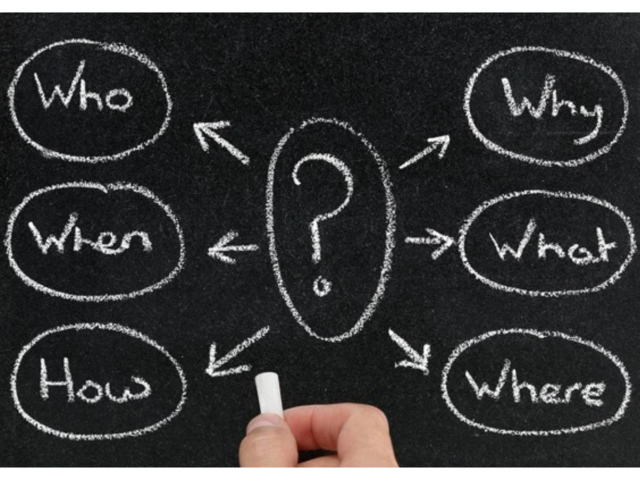Content marketing involves the planning, creation, and distribution of valuable information, and it's designed to attract your audience, retain them and drive customer action.
The central idea behind content marketing is to provide a targeted audience with different types of useful content. While the particular goals of a content marketing campaign may vary, the ultimate intention is to increase the sales of a product or service.
A solid content strategy should be in place to minimize or prevent wasted effort. There is no definitive method to plan or develop a content strategy, but it is important to ensure every aspect is covered on the content marketing plan.

Image source: Unsplash.
"Five Ws" of journalism
The “five Ws” of journalism can be an effective way to get started in developing a plan: who, what, why, when, where, and how. These should provoke a range of answers from marketers and act as general categories to ensure the plan is comprehensive.
Who?
Who is the content for? This can be defined through personas, customer questionnaires, and other market research. Is the content business to business (B2B) or business to customer (B2C)?
What?
What types of content will be developed, and what is the appropriate content to appeal to the target market? Infographics, videos, blog posts, or a combination? What story does the business want to tell, and how does this match keyword research results?
Why?
What is the purpose of creating the content? Are there particular sales targets or conversion rates? Marketers should ask what reasonable goals are, measure those outcomes and how content will bring them to those outcomes.
When?
When can this content be developed and published, and how long will it take to create. These answers should result in developing a content calendar.
Where?
Where will the content be seen? Marketers should consider through what platforms content will reach the target market. Will it be social media, email, blogs?
How?
How will the content go from concept to conversion? Will the content be created in-house or with an agency? How much will it cost? Who will write up the briefing, and who will approve the final content? Will they push content to different platforms at different times? How will the target audience discover the content? How will conversations be followed up?

Image source: Unsplash.
The resulting answers and final decisions should be documented to ensure everyone works together and knows their responsibilities.
All of the ideas from the initial part of developing a strategy need to be turned into a series of clear, coordinated, actionable steps to result in measurable outcomes.
Read about content marketing best practices and current trends.
The content calendar
The content calendar is central to turning a content plan into a successful reality; and will be the referencing document of the content marketing plan. To be successful, this calendar needs to be:
Shareable
This doesn’t just mean that the calendar is a digital spreadsheet that can be emailed to everyone in the office. The calendar needs to be easy for everyone to understand and see what their responsibilities are. That means keeping it simple.
Complete
All of the content that needs to be produced has to be included. Keep in mind that people will not necessarily check the content calendar every day. Any updates or changes need to be made well ahead of schedule.
Specific
The value of a calendar is its ability to schedule content to a very detailed level. For example, scheduling a piece of content to go out in a particular week rather than a particular day means it will likely go out at the end of that week. This may not be the most impactful time for that content.
Specificity also helps to avoid missed deadlines. For example, when publishing time-critical content, extra time may need to be factored into its creation in the case of a delay from the creator.

Image source: Unsplash.
Structured
Two primary factors will determine the structure: budget and events.
The budget may be the amount of time the marketing department can allocate to a campaign or extend to hiring writers or marketing agencies. This will determine how much content can be developed or repurposed and how often it can be published.
Within the timeframe, there will likely be key events that offer prime opportunities to publish content. These may be industry conferences, workshops, or product releases.
Realistic
The content calendar should indicate whether each piece of content has been created or has yet to be made when it is to be made and who is responsible for creating it.
This list needs to be realistic about the amount of content that can reasonably be created within the timeframe and budget. With this list established, the calendar can be filled out with regular content postings.
Each posting should include details of further promotion through other formats, such as social media. The calendar needs to ensure that scheduled content can be maintained even when event-driven content is being pushed out.
Measurable
There needs to be a follow-up on the various pieces of content published to determine the campaign's value.
The calendar should include periodic analysis of metrics. Marketers can then see what content is working and which may need to be re-evaluated.

Image source: Unsplash.
Higher and lower-level content calendars
Depending on the size of the campaign, it may be useful to keep higher and lower-level calendars. The higher-level calendar may refer to topics covered in a given time period and show a broader overview. A lower-level calendar will contain all of the particular dates and titles, allowing stakeholders to look up specific details.
Another piece of documentation useful for a content campaign is the content development brief. This is a document that details the requirements of each piece of content. It includes information like the topic, value proposition, tone, style, keyword focus, and deadlines.

Image source: Unsplash.
Content strategy
Every company and business will likely have its own method for this, but it's important to ensure every aspect is covered. The company's market, business analysis, and marketing efforts have to be considered when developing personas, budgets, and any other relevant components of the content marketing plan.
Read more about digital marketing.
If you're looking to upskill or start a new career in this field, we have the right course to help you succeed.
